Evaluating the Performance of a Solar Distillation Technology in the Desalination of Brackish Waters
Abstract
:1. Introduction
2. Methodology
2.1. Case Study
2.2. Pilot Units and Tests
2.3. Desalination Mechanism
3. Results and Discussion
3.1. Water Quality
3.2. Effect of Unit Orientation
3.3. Effect of Pool Depth
3.4. Effect of Atmospheric Conditions
3.5. Effect of Salinity
3.6. Effect of Water Flow Continuity
3.7. Statistical Analysis and Water Quality Assessment
4. Conclusions and Recommendations
Author Contributions
Funding
Institutional Review Board Statement
Informed Consent Statement
Data Availability Statement
Conflicts of Interest
References
- Shalaby, S.M.; Sharshir, S.W.; Kabeel, A.E.; Kandeal, A.W.; Abosheiasha, H.F.; Abdelgaied, M.; Hamed, M.H.; Yang, N. Reverse osmosis desalination systems powered by solar energy: Preheating techniques and brine disposal challenges—A detailed review. Energy Convers. Manag. 2022, 251, 114971. [Google Scholar] [CrossRef]
- Tarazona-Romero, B.E.; Campos-Celador, A.; Maldonado-Muñoz, Y.A. Can solar desalination be small and beautiful? A critical review of existing technology under the appropriate technology paradigm. Energy Res. Soc. Sci. 2022, 88, 102510. [Google Scholar] [CrossRef]
- Amarasinghe, U.; Shah, T.; Turral, H.; Anand, B.K. India’s water future to 2025-2050: Business-as-usual scenario and deviations. IWMI Res. Report. 2007, 67, 1654–1678. [Google Scholar]
- Karagiannis, I.C.; Soldatos, P.G. Water desalination cost literature: Review and assessment. Desalination 2008, 223, 448–456. [Google Scholar] [CrossRef]
- Jeevadason, A.W.; Padmini, S.; Bharatiraja, C. A review on diverse combinations and Energy-Exergy-Economics (3E) of hybrid solar still desalination. Desalination 2022, 527, 115587. [Google Scholar] [CrossRef]
- Lashkaripour, G.R.; Zivdar, M. Desalination of brackish groundwater in Zahedan city in Iran. Desalination 2005, 177, 1–5. [Google Scholar] [CrossRef]
- Banat, F.; Jwaied, N. Economic evaluation of desalination by small-scale autonomous solar-powered membrane distillation units. Desalination 2008, 220, 566–573. [Google Scholar] [CrossRef]
- Charcosset, C. A review of membrane processes and renewable energies for desalination. Desalination 2009, 245, 214–231. [Google Scholar] [CrossRef]
- Kabeel, A.E.; Elmaaty, T.A.; El-Said, E.M. Economic analysis of a small-scale hybrid air HDH–SSF (humidification and dehumidification–water flashing evaporation) desalination plant. Energy 2013, 53, 306–311. [Google Scholar] [CrossRef]
- Li, X.; Yuan, G.; Wang, Z.; Li, H.; Xu, Z. Experimental study on a humidification and dehumidification desalination system of solar air heater with evacuated tubes. Desalination 2014, 351, 1–8. [Google Scholar] [CrossRef]
- Amin, Z.M.; Hawlader, M.N.A. Analysis of solar desalination system using heat pump. Renew. Energ 2015, 74, 116–123. [Google Scholar] [CrossRef]
- Mofreh, H.H.; Kabeel, A.E.; Omara, Z.M.; Sharshir, S.W. Mathematical and experimental investigation of a solar humidification–dehumidification desalination unit. Desalination 2015, 358, 9–17. [Google Scholar]
- Taghvaei, H.; Taghvaei, H.; Jafarpur, K.; Estahbanati, M.K.; Feilizadeh, M.; Feilizadeh, M.; Ardekani, A.S. A thorough investigation of the effects of water depth on the performance of active solar stills. Desalination 2014, 347, 77–85. [Google Scholar] [CrossRef]
- Gorjian, S.; Ghobadian, B. Solar desalination: A sustainable solution to water crisis in Iran. Renew. Sust. Energ. Rev. 2015, 48, 571–584. [Google Scholar] [CrossRef]
- Cipollina, A.; Micale, G.; Rizzuti, L. Seawater Desalination: Conventional and Renewable Energy Processes; Springer Science & Business Media: Berlin, Germany, 2009. [Google Scholar]
- Mekhilef, S.; Saidur, R.; Safari, A. A review on solar energy use in industries. Renew. Sust. Energ. Rev. 2011, 15, 1777–1790. [Google Scholar] [CrossRef]
- Sharon, H.; Reddy, K.S. A review of solar energy driven desalination technologies. Renew. Sust. Energ. Rev. 2015, 41, 1080–1118. [Google Scholar] [CrossRef]
- AWWA. Standard Methods for the Examination of Water and Wastewater, 22nd ed.; American Water Works Association: Tehran, Iran, 2012. [Google Scholar]
- Velmurugan, V.; Deenadayalan, C.K.; Vinod, H.; Srithar, K. Desalination of effluent using fin type solar still. Energy 2008, 33, 1719–1727. [Google Scholar] [CrossRef]
- Kumar, S.; Tiwari, G.N.; Singh, H.N. Annual performance of an active solar distillation system. Desalination 2000, 127, 79–88. [Google Scholar] [CrossRef]
- Kumar, S.; Tiwari, G.N. Optimization of collector and basin areas for a higher yield for active solar stills. Desalination 1998, 116, 1–9. [Google Scholar] [CrossRef]
- Singh, H.N.; Tiwari, G.N. Monthly performance of passive and active solar stills for different Indian climatic conditions. Desalination 2004, 168, 145–150. [Google Scholar] [CrossRef]
- Badran, O.O.; Al-Tahaineh, H.A. The effect of coupling a flat-plate collector on the solar still productivity. Desalination 2005, 183, 137–142. [Google Scholar] [CrossRef]
- Dimri, V.; Sarkar, B.; Singh, U.; Tiwari, G.N. Effect of condensing cover material on yield of an active solar still: An experimental validation. Desalination 2008, 227, 178–189. [Google Scholar] [CrossRef]
- Tiwari, G.N.; Dimri, V.; Chel, A. Parametric study of an active and passive solar distillation system: Energy and exergy analysis. Desalination 2009, 242, 1–18. [Google Scholar] [CrossRef]
- Jacobson, K.S.; Drew, D.M.; He, Z. Efficient salt removal in a continuously operated upflow microbial desalination cell with an air cathode. Bioresour. Technol. 2011, 102, 376–380. [Google Scholar] [CrossRef] [PubMed]
- Voropoulos, K.; Mathioulakis, E.; Belessiotis, V. A hybrid solar desalination and water heating system. Desalination 2004, 164, 189–195. [Google Scholar] [CrossRef]
- El-Sebaii, A.A.; Aboul-Enein, S.; Ramadan, M.R.I.; Khallaf, A.M. Thermal performance of an active single basin solar still (ASBS) coupled to shallow solar pond (SSP). Desalination 2011, 280, 183–190. [Google Scholar] [CrossRef]
- Narayan, G.P.; Sharqawy, M.H.; Summers, E.K.; Lienhard, J.H.; Zubair, S.M.; Antar, M.A. The potential of solar-driven humidification–dehumidification desalination for small-scale decentralized water production. Renew. Sust. Energ. Rev. 2010, 14, 1187–1201. [Google Scholar] [CrossRef]
- Farsad, S.; Behzadmehr, A. Analysis of a solar desalination unit with humidification–dehumidification cycle using DoE method. Desalination 2011, 278, 70–76. [Google Scholar] [CrossRef]
- Cao, F.; Li, H.; Zhang, Y.; Zhao, L. Numerical simulation and comparison of conventional and sloped solar chimney power plants: The case for Lanzhou. Sci. World J. 2013, 2013, 852864. [Google Scholar] [CrossRef]
- Manolakos, D.; Mohamed, E.S.; Karagiannis, I.; Papadakis, G. Technical and economic comparison between PV-RO system and RO-Solar Rankine system. Case study: Thirasia island. Desalination 2008, 221, 37–46. [Google Scholar] [CrossRef]
- Childs, W.D.; Dabiri, A.E.; Al-Hinai, H.A.; Abdullah, H.A. VARI-RO solar-powered desalting technology. Desalination 1999, 125, 155–166. [Google Scholar] [CrossRef]
- Fath, H.E.; Elsherbiny, S.M.; Hassan, A.A.; Rommel, M.; Wieghaus, M.; Koschikowski, J.; Vatansever, M. PV and thermally driven small-scale, stand-alone solar desalination systems with very low maintenance needs. Desalination 2008, 225, 58–69. [Google Scholar] [CrossRef]
- Korngold, E.; Aronov, L.; Daltrophe, N. Electrodialysis of brine solutions discharged from an RO plant. Desalination 2009, 242, 215–227. [Google Scholar] [CrossRef]
- Lundstrom, J.E. Water desalting by solar powered electrodialysis. Desalination 1979, 31, 469–488. [Google Scholar] [CrossRef]
- Gheibi, M.; Eftekhari, M.; Akrami, M.; Emrani, N.; Hajiaghaei-Keshteli, M.; Fathollahi-Fard, A.M.; Yazdani, M. A Sustainable Decision Support System for Drinking Water Systems: Resiliency Improvement against Cyanide Contamination. Infrastructures 2022, 7, 88. [Google Scholar] [CrossRef]
- Gheibi, M.; Eftekhari, M.; Tabrizi, M.G.; Fathollahi-Fard, A.M.; Tian, G. Mechanistic evaluation of cationic dyes adsorption onto low-cost calcinated aerated autoclaved concrete wastes. Int. J. Environ. Sci. Technol. 2021, 19, 6429–6444. [Google Scholar] [CrossRef]
- Nejatian, A.; Makian, M.; Gheibi, M.; Fathollahi-Fard, A.M. A Novel Viewpoint to the Green City Concept Based on Vegetation Area Changes and Contributions to Healthy Days: A Case Study of Mashhad, Iran. Environ. Sci. Pollut. Res. 2021, 29, 702–710. [Google Scholar] [CrossRef]
- Mohammadi, M.; Gheibi, M.; Fathollahi-Fard, A.M.; Eftekhari, M.; Kian, Z.; Tian, G. A hybrid computational intelligence approach for bioremediation of amoxicillin based on fungus activities from soil resources and aflatoxin B1 controls. J. Environ. Manag. 2021, 299, 113594. [Google Scholar] [CrossRef]
- Shahsavar, M.M.; Akrami, M.; Gheibi, M.; Kavianpour, B.; Fathollahi-Fard, A.M.; Behzadian, K. Constructing a smart framework for supplying the biogas energy in green buildings using an integration of response surface methodology, artificial intelligence and petri net modelling. Energy Convers. Manag. 2021, 248, 114794. [Google Scholar] [CrossRef]
- Zamanikherad, M.; Montazeri, A.; Gheibi, M.; Fathollahi-Fard, A.M.; Behzadian, K. An efficient design of primary sedimentation tanks using a combination of the response surface, metaheuristic, and scenario building methods. Int. J. Environ. Sci. Technol. 2022, 56, 1–32. [Google Scholar] [CrossRef]
- Gheibi, M.; Karrabi, M.; Latifi, P.; Fathollahi-Fard, A.M. Evaluation of traffic noise pollution using geographic information system and descriptive statistical method: A case study in Mashhad, Iran. Environ. Sci. Pollut. Res. 2022, 32, 1–14. [Google Scholar] [CrossRef] [PubMed]
- Rajendran, S.; Čep, R.; Narayanan, R.C.; Pal, S.; Kalita, K. A Conceptual Comparison of Six Nature-Inspired Metaheuristic Algorithms in Process Optimization. Processes 2022, 10, 197. [Google Scholar] [CrossRef]
- Choi, J.; Cho, J.; Shin, J.; Cha, H.; Jung, J.; Song, K.G. Performance and economic analysis of a solar membrane distillation pilot plant under various operating conditions. Energy Convers. Manag. 2022, 268, 115991. [Google Scholar] [CrossRef]
- Andrés-Mañas, J.A.; Requena, I.; Zaragoza, G. Characterization of the use of vacuum enhancement in commercial pilot-scale air gap membrane distillation modules with different designs. Desalination 2022, 528, 115490. [Google Scholar] [CrossRef]
- Subiela-Ortín, V.J.; Peñate-Suárez, B.; de la Fuente-Bencomo, J.A. Main Technical and Economic Guidelines to Implement Wind/Solar-Powered Reverse-Osmosis Desalination Systems. Processes 2022, 10, 653. [Google Scholar] [CrossRef]
- Koutroulis, E.; Petrakis, G.; Agou, V.; Malisovas, A.; Hristopulos, D.; Partsinevelos, P.; Tripolitsiotis, A.; Halouani, N.; Ailliot, P.; Boutigny, M.; et al. Site selection and system sizing of desalination plants powered with renewable energy sources based on a web-GIS platform. Int. J. Energy Sect. Management 2021, 45, 1456–1473. [Google Scholar] [CrossRef]
- Amiri, S.A.H.S.; Zahedi, A.; Kazemi, M.; Soroor, J.; Hajiaghaei-Keshteli, M. Determination of the optimal sales level of perishable goods in a two-echelon supply chain network. Comput. Ind. Eng. 2020, 139, 106156. [Google Scholar] [CrossRef]
- Cheraghalipour, A.; Paydar, M.M.; Hajiaghaei-Keshteli, M. Applying a hybrid BWM-VIKOR approach to supplier selection: A case study in the Iranian agricultural implements industry. Int. J. Appl. Decis. Sci. 2018, 11, 274–301. [Google Scholar] [CrossRef]
- Golmohamadi, S.; Tavakkoli-Moghaddam, R.; Hajiaghaei-Keshteli, M. Solving a fuzzy fixed charge solid transportation problem using batch transferring by new approaches in meta-heuristic. Electron. Notes Discret. Math. 2017, 58, 143–150. [Google Scholar] [CrossRef]
- Hajiaghaei-Keshteli, M.; Sajadifar, S.M. Deriving the cost function for a class of three-echelon inventory system with N-retailers and one-for-one ordering policy. Int. J. Adv. Manuf. Technol. 2010, 50, 343–351. [Google Scholar] [CrossRef]
- Hajiaghaei-Keshteli, M.; Sajadifar, S.M.; Haji, R. Determination of the economical policy of a three-echelon inventory system with (R, Q) ordering policy and information sharing. Int. J. Adv. Manuf. Technol. 2011, 55, 831–841. [Google Scholar] [CrossRef]
- Liao, Y.; Kaviyani-Charati, M.; Hajiaghaei-Keshteli, M.; Diabat, A. Designing a closed-loop supply chain network for citrus fruits crates considering environmental and economic issues. J. Manuf. Syst. 2020, 55, 199–220. [Google Scholar] [CrossRef]
- Tian, G.; Yuan, G.; Aleksandrov, A.; Zhang, T.; Li, Z.; Fathollahi-Fard, A.M.; Ivanov, M. Recycling of spent Lithium-ion Batteries: A comprehensive review for identification of main challenges and future research trends. Sustain. Energy Technol. Assess. 2022, 53, 102447. [Google Scholar] [CrossRef]
- Tian, G.; Fathollahi-Fard, A.M.; Ren, Y.; Li, Z.; Jiang, X. Multi-objective scheduling of priority-based rescue vehicles to extinguish forest fires using a multi-objective discrete gravitational search algorithm. Inf. Sci. 2022, 608, 578–596. [Google Scholar] [CrossRef]
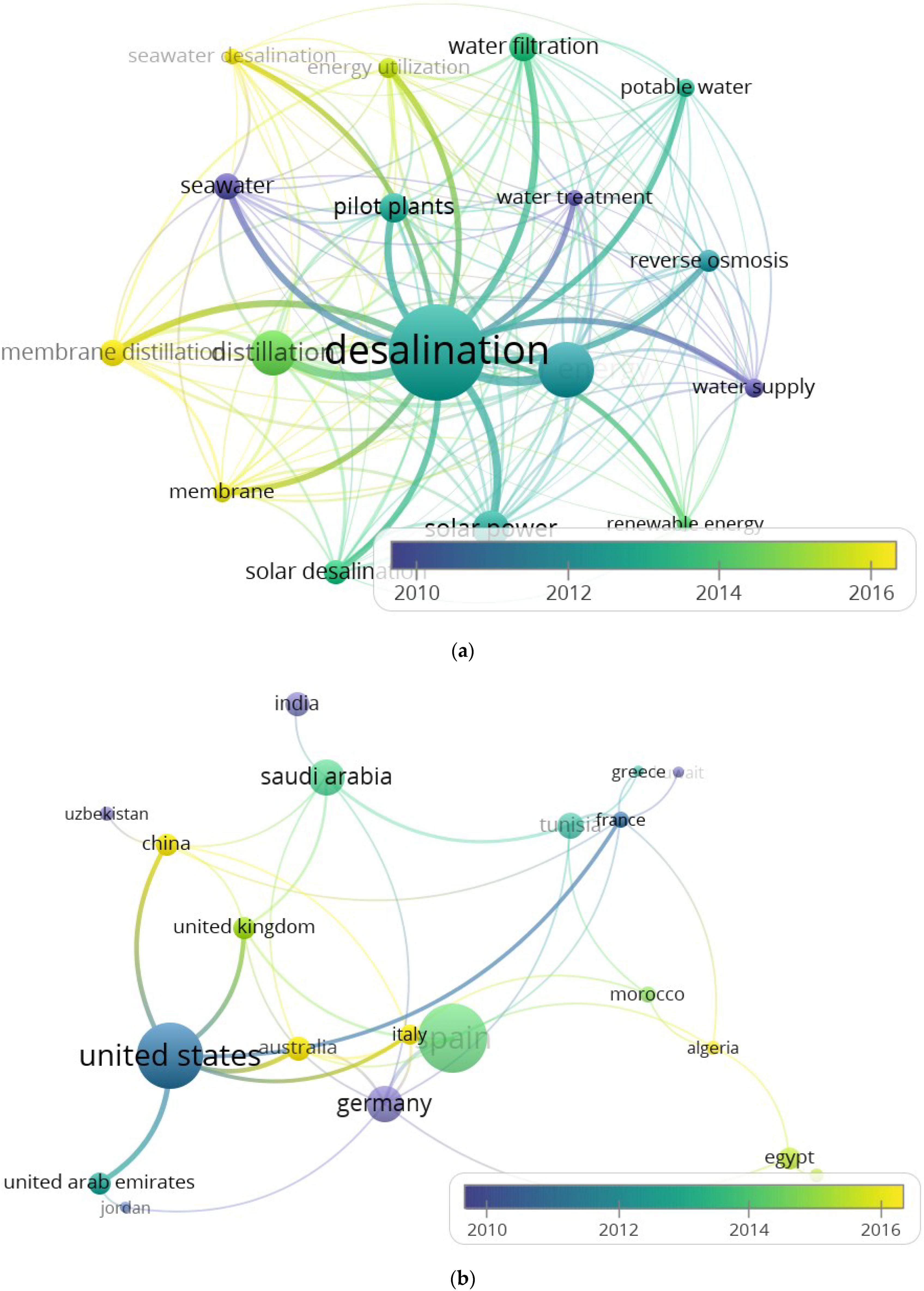
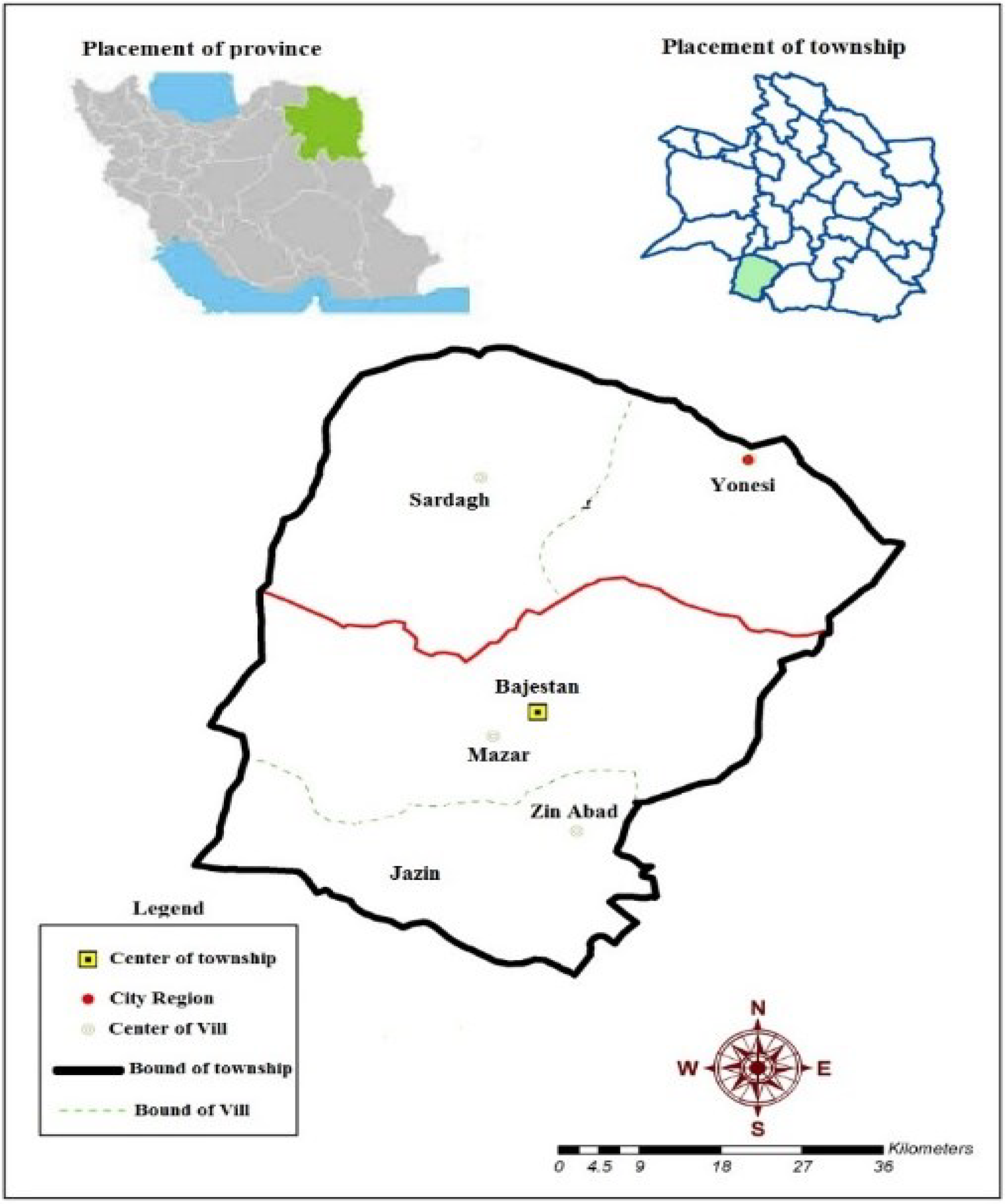

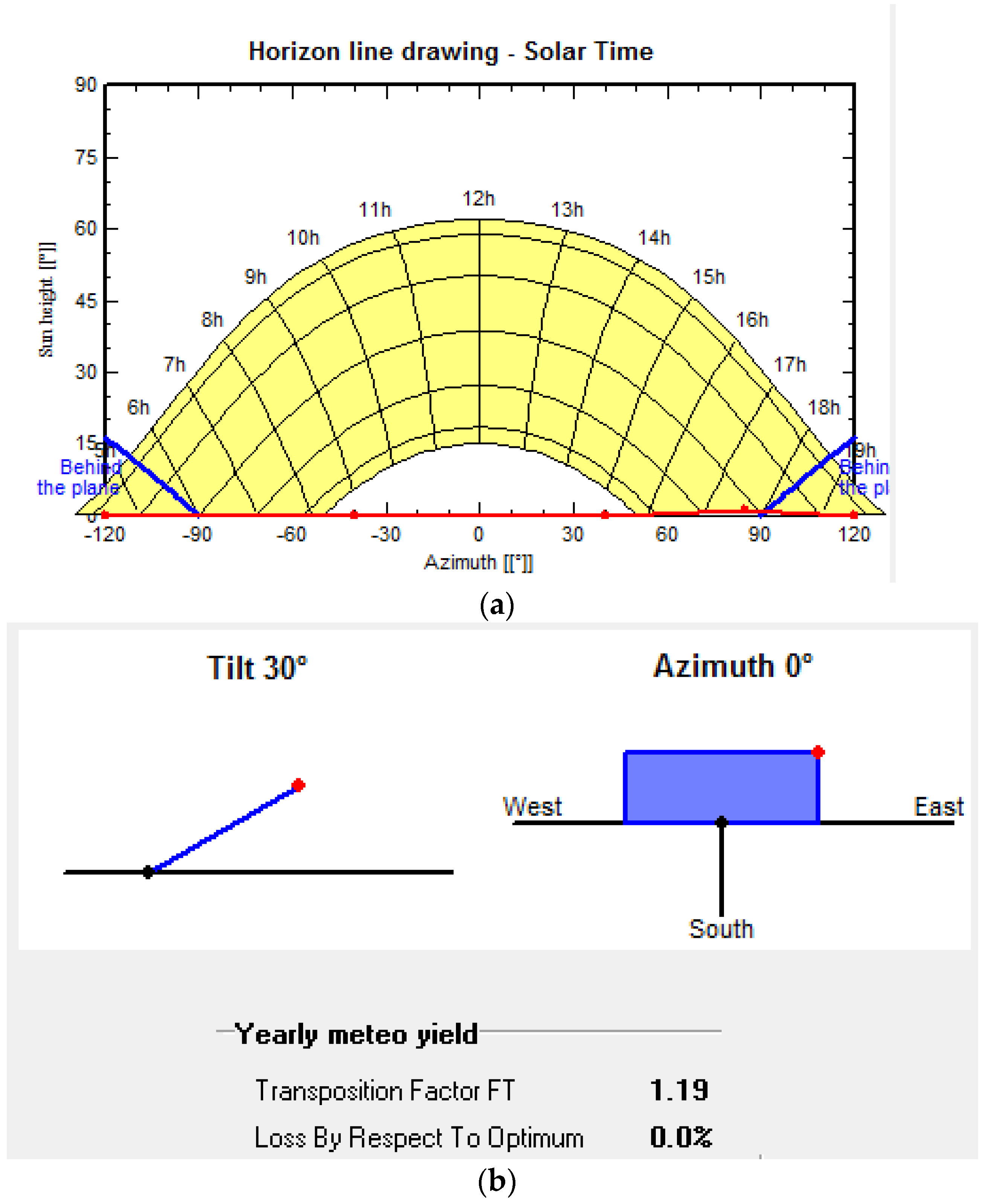

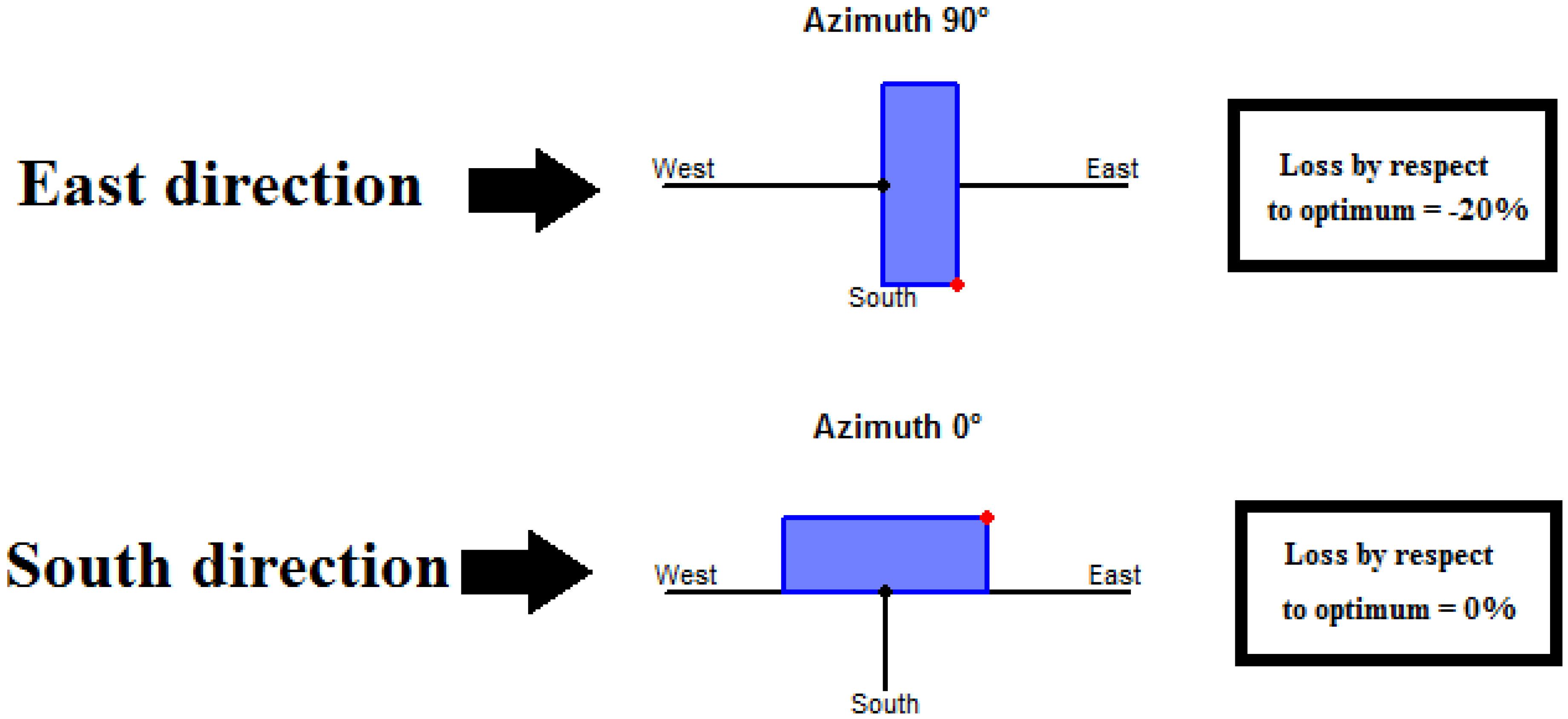
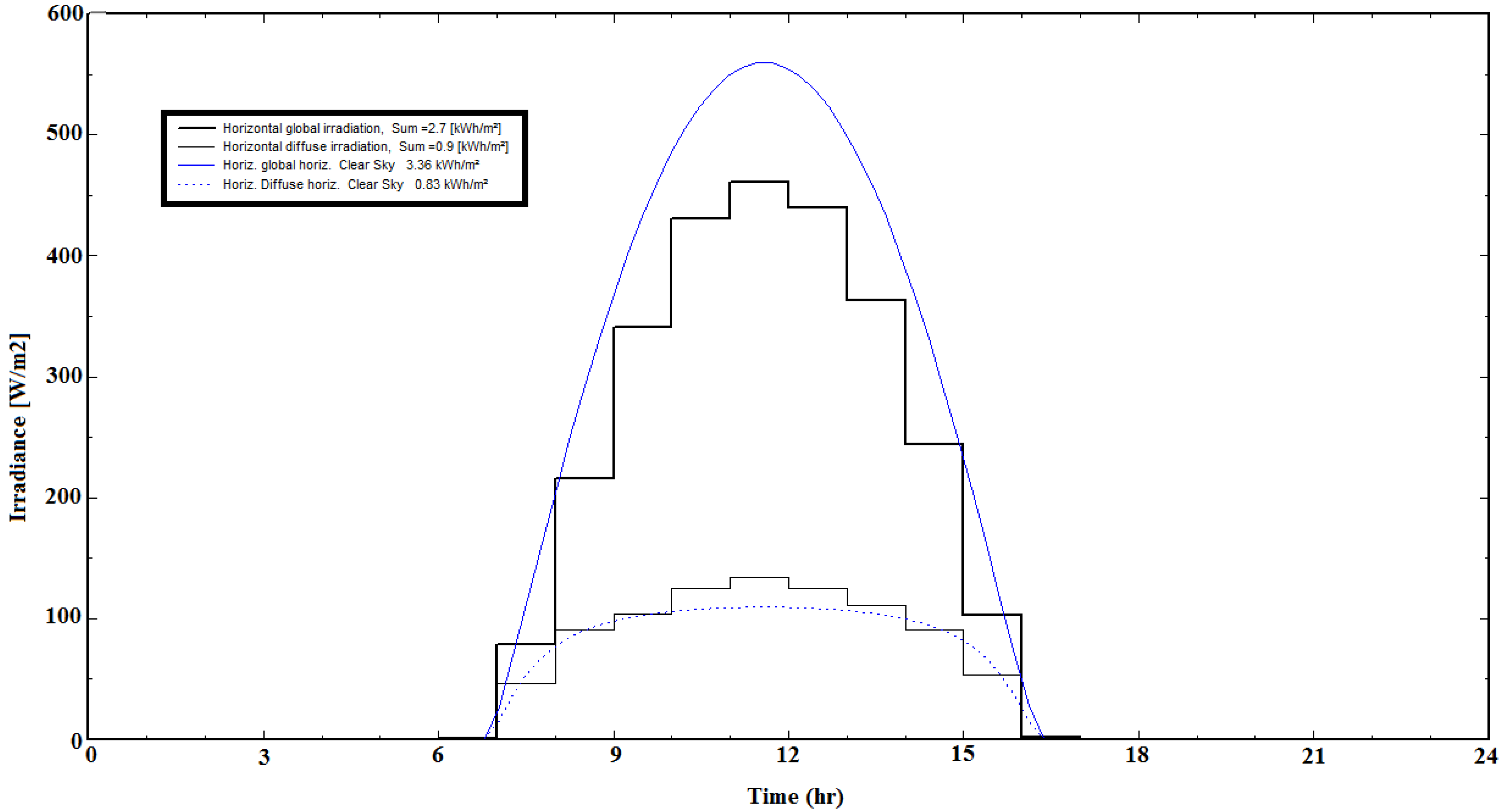

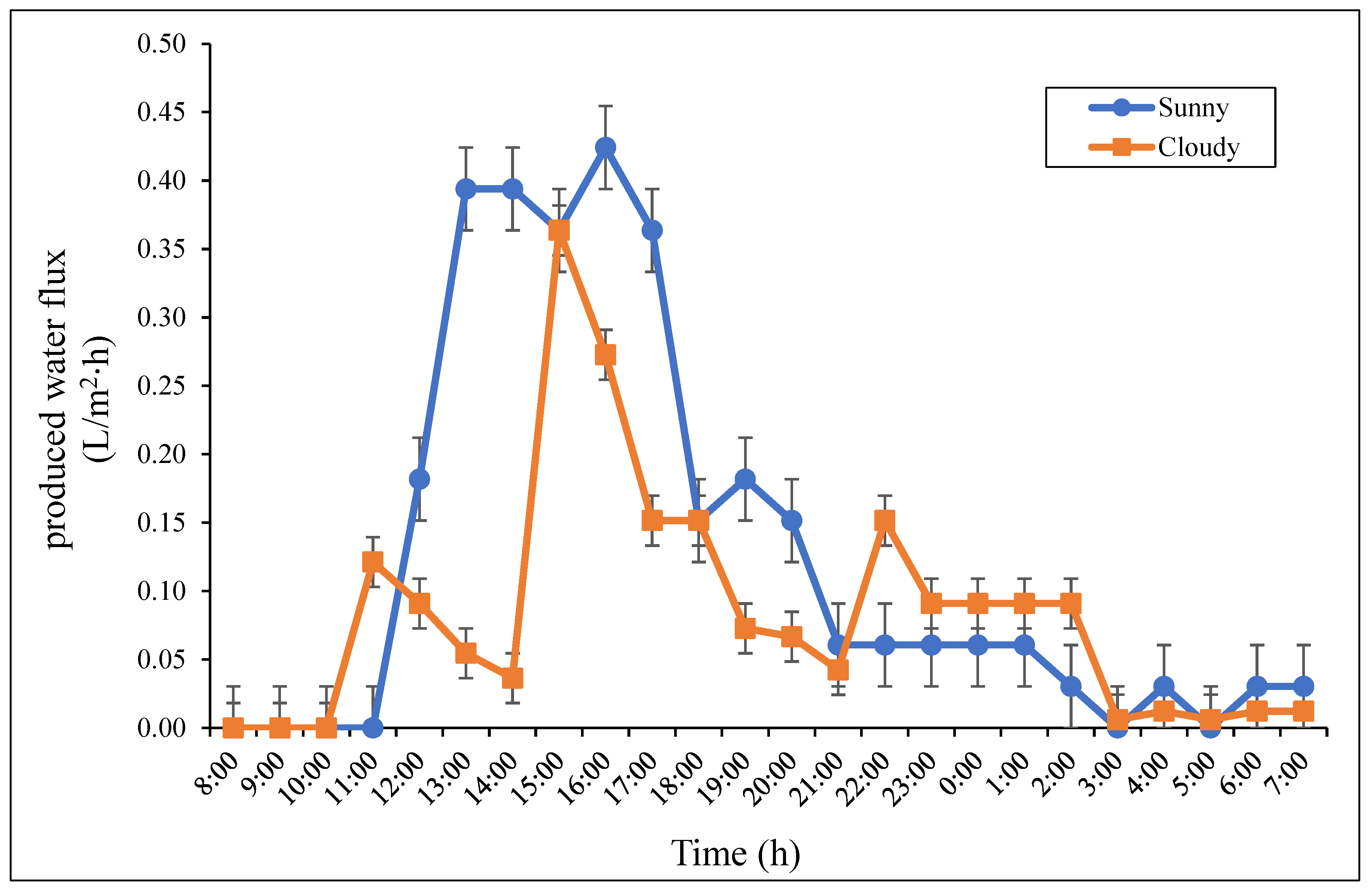

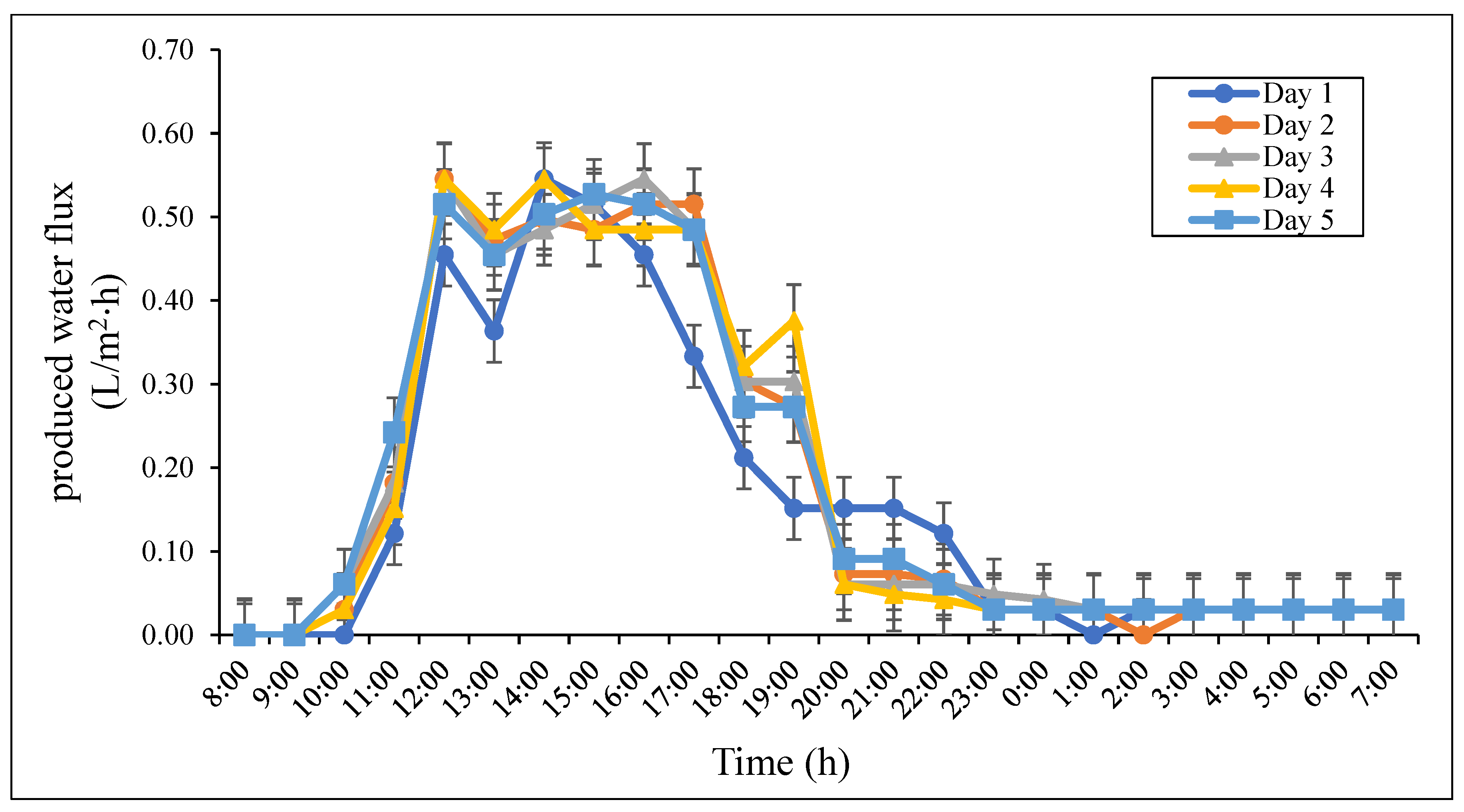
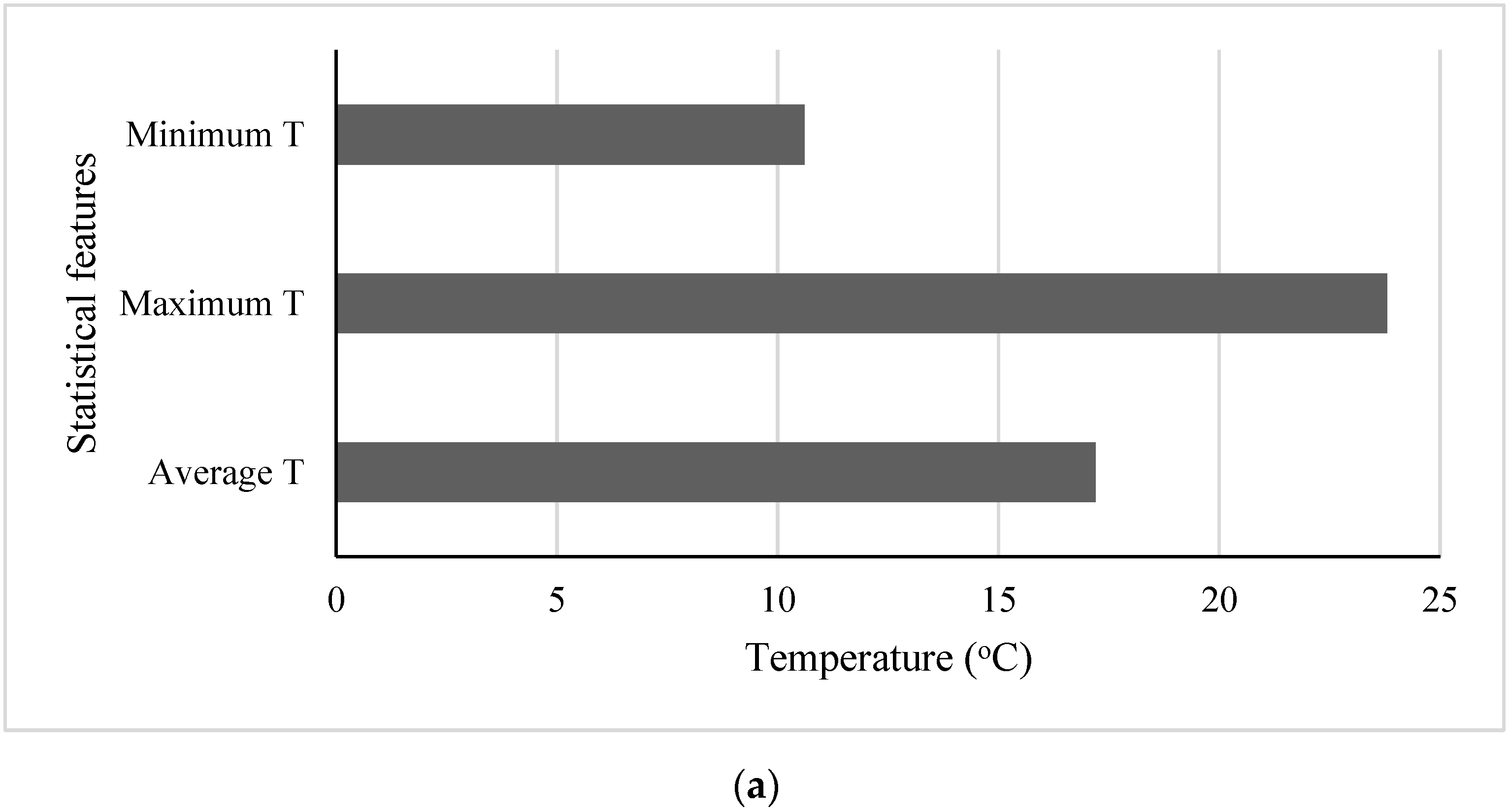
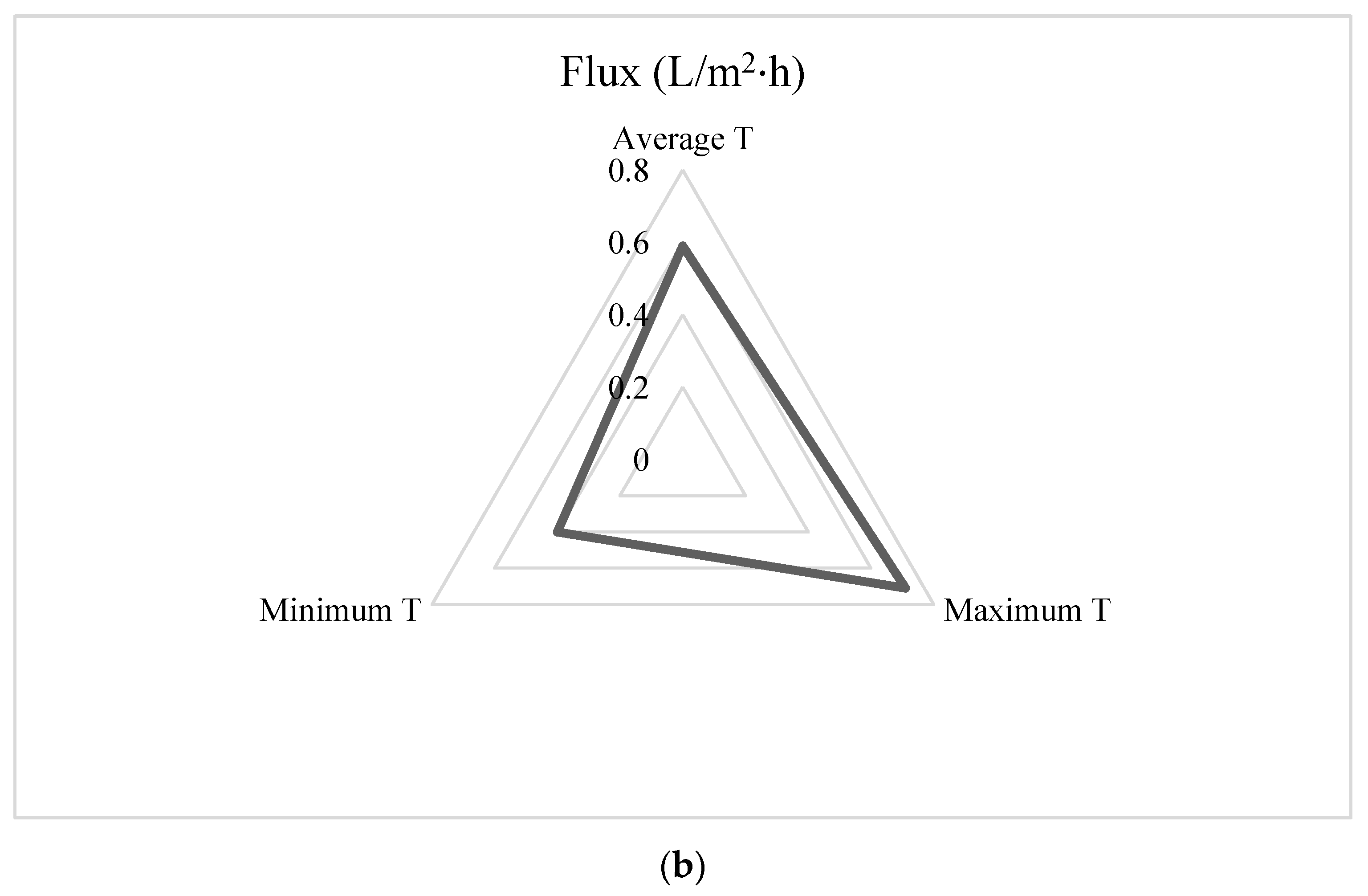
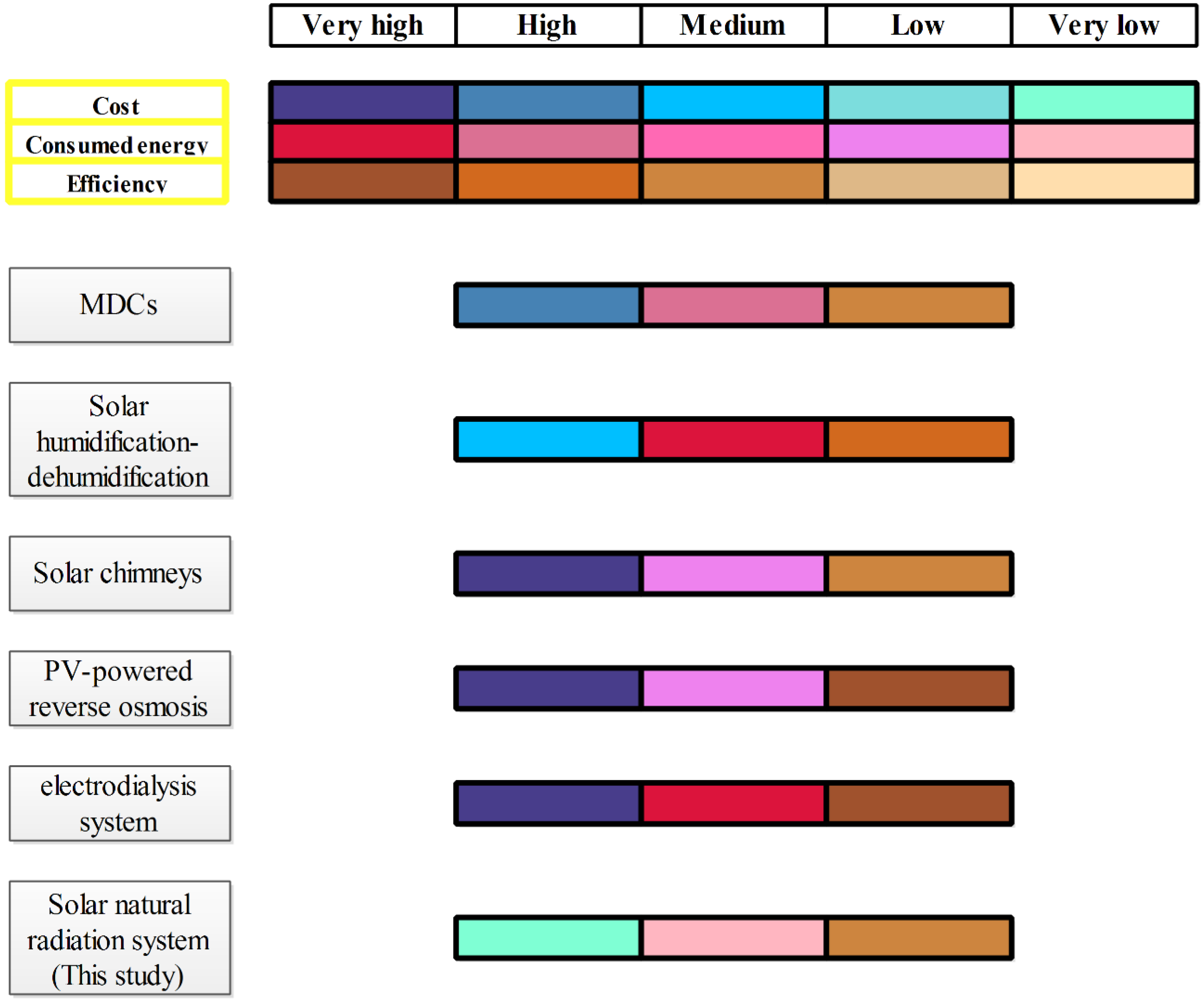
| Parameter | Value | Parameter | Value |
|---|---|---|---|
| Electrical conductivity | 1700 | Potassium | 17.2 |
| Salinity (NaCl) | 11,000 | Bicarbonate | 305 |
| Sodium | 7393 | Nitrate | 38 |
| Chloride | 6674 | Sulfate | 1000 |
| Calcium | 256 | Hardness (based on CaCO3) | 1100 |
| Magnesium | 111 | Alkalinity | 350 |
| Parameter | Mean Square | F Value | p-Value |
|---|---|---|---|
| Pool depth | 10,554.710 | 743.928 | <0.0001 |
| Flow continuity | 283.805 | 20.003 | 0.0004 |
| Unit orientation | 73.296 | 5.166 | 0.0382 |
| Weather condition | 21.186 | 1.493 | 0.2406 |
| Input salinity | 15.397 | 0.956 | 0.6317 |
| Parameter | Freshwater (Output) | Parameter | Freshwater (Output) |
|---|---|---|---|
| Electrical conductivity | 270 | Magnesium | 5.5 |
| Salinity (NaCl) | 250 | Potassium | 2.3 |
| Sodium | 67.1 | Sulfate | 52.8 |
| Chloride | 42.95 | Nitrate | 7.1 |
| Calcium | 14 | Hardness (based on CaCO3) | 57.5 |
Publisher’s Note: MDPI stays neutral with regard to jurisdictional claims in published maps and institutional affiliations. |
© 2022 by the authors. Licensee MDPI, Basel, Switzerland. This article is an open access article distributed under the terms and conditions of the Creative Commons Attribution (CC BY) license (https://creativecommons.org/licenses/by/4.0/).
Share and Cite
Shakerian, M.; Karrabi, M.; Gheibi, M.; Fathollahi-Fard, A.M.; Hajiaghaei-Keshteli, M. Evaluating the Performance of a Solar Distillation Technology in the Desalination of Brackish Waters. Processes 2022, 10, 1626. https://doi.org/10.3390/pr10081626
Shakerian M, Karrabi M, Gheibi M, Fathollahi-Fard AM, Hajiaghaei-Keshteli M. Evaluating the Performance of a Solar Distillation Technology in the Desalination of Brackish Waters. Processes. 2022; 10(8):1626. https://doi.org/10.3390/pr10081626
Chicago/Turabian StyleShakerian, Mahyar, Mohsen Karrabi, Mohammad Gheibi, Amir M. Fathollahi-Fard, and Mostafa Hajiaghaei-Keshteli. 2022. "Evaluating the Performance of a Solar Distillation Technology in the Desalination of Brackish Waters" Processes 10, no. 8: 1626. https://doi.org/10.3390/pr10081626
APA StyleShakerian, M., Karrabi, M., Gheibi, M., Fathollahi-Fard, A. M., & Hajiaghaei-Keshteli, M. (2022). Evaluating the Performance of a Solar Distillation Technology in the Desalination of Brackish Waters. Processes, 10(8), 1626. https://doi.org/10.3390/pr10081626










